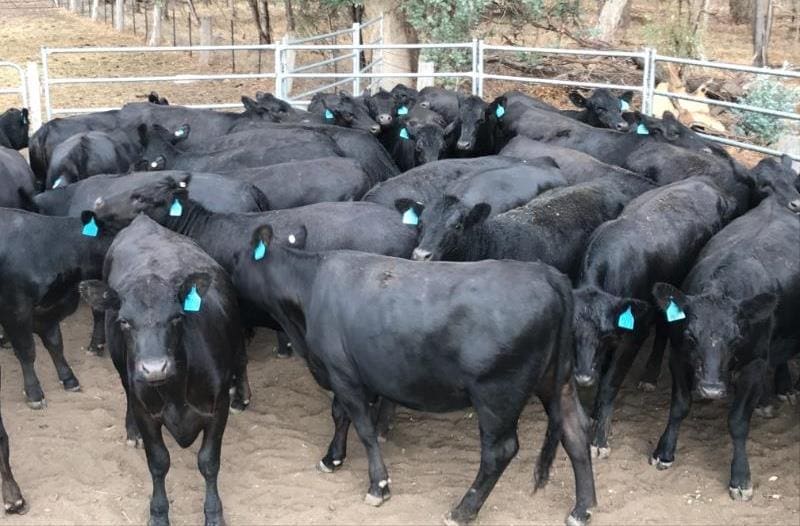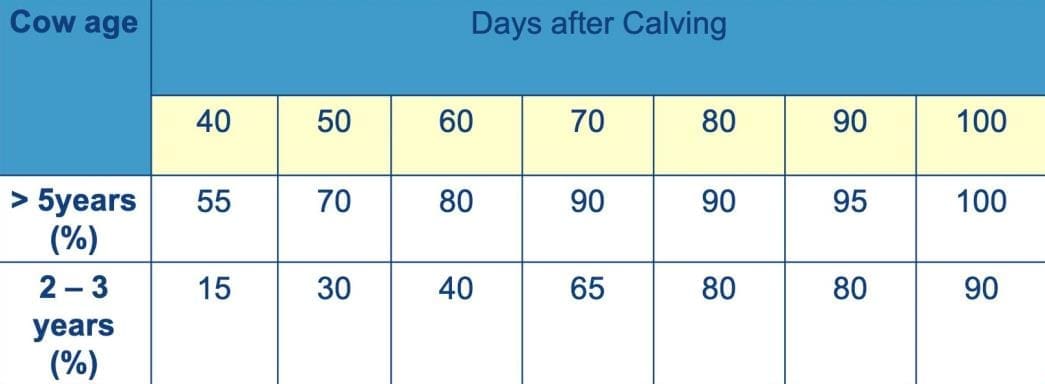
IF 2020 will be remembered as the year when bull sales set new records, another record is being set across the country within breeding herds, as producers seek to retain and join greater numbers of heifers.
The reduction in mature cows over several years of drought has seen a change in the breeding herd age profile in most areas, with younger cows and heifers being retained to form a nucleus for herd rebuilding.
While the genetic progress of many herds may increase with greater numbers of younger females considered for joining, there are some key considerations producers should also factor into their decisions around joining groups, principally among Bos Taurus cattle.
These factors include the choice of sires to be used over heifers, the timing of joining and significantly what females should be retained and how long will they be used within a herd.
Replacement heifer selection is a process that producers’ approach in several different ways. These can vary in working to find a set number of replacements, based on the number of mature cows to be replaced due to age; production status; health and mortality loss. The number to be retained is either a set number driven by these reductions or serves as a base, with some flexibility each year driven by the intention to increase numbers or to allow for some non-pregnant heifers following joining.
Establishing a number to retain is often the most straightforward step in selecting replacement heifers. However this stage can easily become skewed by subjectivity. This often occurs when producers fail to have data on the herd’s performance.
Producers need to know what their mortality rates are, and what their conception and weaning rates are from year to year. The capacity to identify less productive cows – for reasons of late conception, lighter weaning weights and for temperament, ensures that culling removes individuals that don’t belong. The flow-on is a more accurate base to calculate replacement numbers.
The criteria around replacement females has been relaxed in many herds… as producers concentrate on rebuilding
For many producers, 2020 has seen a lot of compromise in the approach to replacement females. The need to rebuild numbers has seen many more females kept on with an intention to join. As such, the criteria around replacement females has been relaxed in many herds. While this allows producers a chance to rebuild their numbers, there are ramifications to be considered.
One of the key areas is in the size and weight of heifers. Earlier this year in a weekly genetics review, I noted many producers would be seeking to join heifers which will be smaller and potentially lighter than usual. As an industry benchmark, it is recommended that Bos Taurus heifers should meet a target of 65pc of their mature size at joining.
However, heifers can commence cycling when they reach a weight that is 55pc of their mature weight. While lighter weights offer an opportunity for a heifer to conceive, longer term producers need to consider how they will manage a smaller, younger and lighter female at calving. Part of this consideration includes managing that female as a lactating animal from calving through to re-joining.

Research from NSW & Victoria highlights the impact age can have on the return to oestrus. The table shows the time difference between cattle in average condition (Fat Score 3) at calving, and the time before they return to oestrus.
Lighter weight, younger cattle take longer to recover from calving. This can have a significant flow-on effect to a herd, particularly if there is a high proportion of young females calving. As a strategy to manage this issue, producers need to be prepared to ensure nutritional requirements are adequately maintained at calving and through to weaning.
Heifers that are underfed or struggle to meet their nutritional needs will take longer to return to oestrus, as well as struggling to raise a calf to acceptable weaning weights. Without a planned nutritional strategy, increasing heifer numbers can be less successful than many producers may expect.
Producers may also be less rigorous in their selection on structure. Compromises on legs, feet, eyes and jaws are often made. Selection always has some tolerances, as not every animal is perfect. Again, it is a longer-term consideration that producers need to factor into their selection this year.
Introducing potential structural issues can take a significant amount of time to remove from the herd. Some issues such as legs and feet may also reflect poor shape and size in the pelvis and hips, increasing the degree of calving difficulty. These physical issues combined with weight, size and the genetic influence of the bull on the calf can result in increased levels of calving dystocia.
So, if structure is a compromise, it’s important the plan for those females includes joining to high calving-ease, lighter birth-weight bulls. Longer term, are these females that should remain in the herd? An acceptable alternative, particularly to generate cash flow may be to calve the female down and re-join to be sold then as PTIC with a calf at foot. This avoids retaining those less desirable traits within a herd.
As joining approaches, replacement heifers should be grouped into mobs of similar size and weight. This allows them to be joined with sires best suited to their particular attributes. Non-pregnant females should be identified early and sold on, particularly given the feed challenges summer poses in many areas. This strategy also keeps cash flow occurring and avoids the temptation of retaining heifers for a second chance, when they have already proven less productive for a herd.
Building a strong maternal herd, particularly after an extended drought, is a long-term process. While some slight compromises can be accepted, those compromises need to be catered-for with a strategy to avoid productive losses or introducing traits that limit a herd’s productivity into the future.
 Alastair Rayner is the Principal of RaynerAg, an agricultural advisory service based in NSW. He regularly attends bull sales to support client purchases and undertakes pre-sale selections and classifications. He can be contacted here or through his website www.raynerag.com.au
Alastair Rayner is the Principal of RaynerAg, an agricultural advisory service based in NSW. He regularly attends bull sales to support client purchases and undertakes pre-sale selections and classifications. He can be contacted here or through his website www.raynerag.com.au
